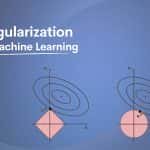Today companies are massively relying on data-driven decision-making processes. However, the pace at which data is being created daily has triggered the demand for quick analysis tools. Managing and analyzing massive amounts of data has become crucial for organizations. Here comes the role of Hive in Hadoop.
Hive is a powerful data warehousing infrastructure that provides an interface for querying and analyzing large datasets stored in Hadoop. In this blog, we will explore the key aspects of Hive Hadoop.
What is Hadoop?
Hive is a Data Warehousing infrastructure built on top of Hadoop. It has the following features:
- It facilitates querying, summarizing, and analyzing large datasets
- Hadoop also provides a SQL-like language called HiveQL
- Hive allows users to write queries to extract valuable insights from structured and semi-structured data stored in Hadoop.
- It also translates these queries into MapReduce jobs
Hive Components Hive components in Hadoop:
Here are the key components of Hive. These work together to enable efficient data processing and analysis:
- Hive Metastore: It is a central repository that stores metadata about Hive’s tables, partitions, and schemas. It acts as a catalogue, providing information about the structure and location of the data.
- Hive Query Processor: It translates the HiveQL queries into a series of MapReduce jobs.
- Hive Execution Engine: It executes the generated query plans on the Hadoop cluster. It manages the execution of tasks across different environments. Thus ensuring optimal performance.
Features of Hive:
- SQL-like Interface: Hive’s interface is almost the same as an SQL-like interface. Thus, making it easier for analysts and data scientists to leverage their SQL skills for Big Data analysis.
- Schema-on-Read: Unlike traditional databases, Hive follows a schema-on-read approach. It applies the data structure during querying rather than data ingestion. Thus it efficiently handles data from different sources.
- Extensibility: Hive provides a pluggable architecture that allows developers to extend its functionality by implementing custom User-Defined Functions (UDFs), SerDes (Serializer/Deserializer), and other components.
- Integration with Existing Tools: Hive integrates seamlessly with various tools and frameworks, such as Apache Spark, Apache Tez, and Apache HBase, enabling interoperability and enhancing the overall big data ecosystem.
- Scalability: Hive leverages the distributed nature of Hadoop, allowing it to scale horizontally by adding more nodes to the cluster. This scalability ensures that Hive can handle large datasets efficiently.
Limitations of Hive:
While Hive offers numerous advantages for Big Data Analysis, it also has some limitations that users should be aware of:
- High Latency: Hive queries typically have higher latency due to the translation of queries into MapReduce jobs. This delay makes Hive less suitable for real-time or interactive data analysis.
- Limited Support for Updates and Deletes: Hive is primarily designed for batch processing and data warehousing scenarios, where updates and deletes are less common. As a result, performing real-time updates on data stored in Hive tables can be challenging.
- Lack of Full ACID Compliance: Hive lacks full ACID (Atomicity, Consistency, Isolation, Durability) compliance, which means it may not provide the same transactional guarantees as traditional databases.
- Suboptimal Performance for Complex Queries: While Hive excels in processing simple queries, its performance may degrade when dealing with complex analytical queries that involve multiple joins and aggregations.
How Data Flows in Hive?
In Hive, data flows through several steps to enable querying and analysis. Let’s understand the key stages in the data flow process:
- Data Ingestion: Data is fed into Hadoop’s distributed file system (HDFS) or other storage systems supported by Hive, such as Amazon S3 or Azure Data Lake Storage.
- Processing of Data: Once the data is stored, Hive provides a metadata layer allowing users to define the schema and create tables. This metadata is stored in a relational database (such as MySQL or Derby) and is used by Hive to optimize query execution.
- Query Compilation: When a user submits a query written in HiveQL, Hive’s query compiler translates it into a directed acyclic graph (DAG) of MapReduce or Tez tasks. This compilation process optimizes the query plan to leverage parallel processing and minimize data movement.
- Job Execution: The compiled query plan is submitted to the Hadoop cluster’s resource manager, which assigns tasks to available compute nodes. Each task processes a portion of the data and produces intermediate results.
- Data Shuffle and Reduce: In the MapReduce or Tez framework, the intermediate results from the map tasks are shuffled and sorted to bring related data together. The reduced tasks then aggregate and combine the data to produce the final result.
- Result Presentation: Once the query execution is complete, the result is presented to the user through the command-line interface or other visualization tools integrated with Hive.
Why Do We Need Hadoop Hive?
Hadoop Hive plays a vital role in the big data landscape for the following reasons:
- Simplified Data Analysis: Hive’s SQL-like interface enables analysts and data scientists to leverage their existing skills and easily perform ad-hoc queries, data exploration, and complex analytics on large datasets.
- Scalability and Parallel Processing: Hive leverages the distributed processing capabilities of Hadoop, allowing it to scale horizontally and process large volumes of data in parallel. This scalability ensures that organizations can handle growing data volumes without sacrificing performance.
- Cost-Effective Storage: Hive stores data in Hadoop’s distributed file system, which provides cost-effective storage for large datasets. Organizations can store massive amounts of data by leveraging commodity hardware without incurring excessive storage costs.
- Integration with Hadoop Ecosystem: Hive seamlessly integrates with other Hadoop ecosystem components, such as Apache Spark and Apache HBase. This integration allows users to combine the strengths of different tools and frameworks to solve complex Big-Data challenges.
Difference Between Pig and Hive in Hadoop:
While both Pig and Hive are part of the Hadoop ecosystem and serve as high-level data processing languages, there are some key differences between the two:
- Processing of Data Paradigm: Pig follows a data flow scripting language called Pig Latin, designed for expressive data transformations. On the other hand, Hive uses a SQL-like language called HiveQL, which provides a familiar interface for SQL users.
- Schema Handling: Pig operates on semi-structured or unstructured data, allowing users to dynamically define and manipulate the schema. In contrast, Hive requires a predefined schema during table creation and follows a schema-on-read approach.
- Optimization: Hive focuses on optimizing complex queries and aggregations by translating them into optimized MapReduce or Tez jobs. Conversely, Pig provides a data flow execution model that optimizes the execution plan automatically.
- User Skillset: Hive is often preferred by SQL-savvy users comfortable with traditional relational databases. Conversely, Pig appeals to users with a programming background and a preference for expressive data transformations.
In summary, while both Pig and Hive serve similar purposes in the Hadoop ecosystem, their choice depends on the specific use case, data processing requirements, and user skill set.
Utilizing Hive in Hadoop: Use Cases and Benefits:
Hive is widely used in big data analytics for various use cases, including:
- Data Exploration: Hive allows users to interactively explore and analyze large datasets stored in Hadoop, enabling data discovery and gaining valuable insights.
- Data Warehousing: Hive provides a familiar SQL-like interface for Data Warehousing tasks, making migrating traditional data warehouse workloads to Hadoop easier.
- ETL (Extract, Transform, Load): Hive supports ETL operations, enabling Data extraction, transformation, and loading from different sources into Hadoop for further analysis.
The benefits of using Hive in Hadoop include the following:
- Scalability: Hive leverages the distributed nature of Hadoop, enabling the processing of large datasets by dividing the workload across multiple machines.
- Performance: Hive optimizes query execution by generating efficient query plans and leveraging the parallel processing capabilities of Hadoop.
- Integration: Hive seamlessly integrates with other tools and frameworks within the Hadoop ecosystem, such as Apache Spark and Apache Tez, extending its capabilities for advanced analytics.
Best Practices for Working with Hive:
To make the most out of Hive in Hadoop, consider the following best practices:
- Partitioning and Bucketing: Partitioning and bucketing data in Hive can significantly improve query performance by reducing the amount of data that needs to be processed.
- Optimized Data Formats: Storing data in optimized file formats, such as ORC (Optimized Row Columnar) or Parquet, can improve query performance and reduce storage requirements.
- Data Compression: It helps in reducing storage costs. Also, it improves query performance by reducing the amount of data transferred over the network
Conclusion
Hive Hadoop is a powerful data warehousing infrastructure. It provides a SQL-like interface for querying and analyzing large datasets stored in Hadoop. Moreover, it offers scalability, extensibility, and integration with the Hadoop ecosystem. Hive also offers a valuable solution for big data analysis. However, it’s important to know its limitations, such as high latency and limited support for updates and deletes.
Hive’s integration with Hadoop and its ability to handle large volumes of data make it an essential tool. Additionally, it’s important to differentiate between Hive and other Data Processing languages like Pig. While both serve similar purposes, they have distinct features and target different user skill sets.
In conclusion, Hive Hadoop empowers organizations to analyze and derive insights from their vast datasets efficiently. By leveraging its features and understanding its limitations, businesses can unlock the full potential of their data. Thus, it helps in informed decision-making.
Frequently Asked Questions
Can Hive Handle Real-time Data Analysis?
Hive is primarily designed for batch processing and data warehousing scenarios. Hence, it is less suitable for real-time or interactive data analysis.
Is Hive ACID-compliant?
Hive lacks full ACID compliance. It may not provide the same transactional guarantees as traditional databases.
How Does Hive Handle Complex Queries?
While Hive excels in processing simple queries, its performance may degrade when dealing with complex analytical queries that involve multiple joins and aggregations.
Can I Update or Delete Data stored in Hive Tables?
Performing real-time updates on data stored in Hive tables can be challenging, as Hive is primarily optimized for batch processing scenarios.
Which Data Processing Language Should I Choose, Pig or Hive?
The choice depends on your specific use case, data processing requirements, and the skill set of the users. Hive is a good choice for SQL-savvy users. However, Pig is a preference for expressive data transformations.











